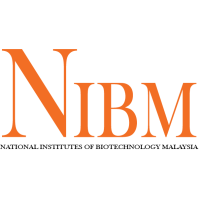Tiger’s milk mushroom is known for its valuable medicinal properties, especially the tuber part. However, wild tuber is very hard to obtain as it grows underground. This study first aimed to cultivate tiger’s milk mushroom tuber through a cultivation technique, and second to compare nutritional and mycochemical contents, antioxidant and cytotoxic activities and compound screening of the cultivated tuber with the wild tuber. Results showed an increase in carbohydrate content by 45.81% and protein content by 123.68% in the cultivated tuber while fat content reduced by 13.04%. Cultivated tuber also showed an increase of up to 64.21% for total flavonoid-like compounds and 62.51% of total β-d-glucan compared to the wild tuber. The antioxidant activity of cultivated tuber and wild tuber was 760 and 840 µg mL−1, respectively. The cytotoxic activity of boiled water extract of cultivated tuber against a human lung cancer cell line (A549) was 65.50 ± 2.12 µg mL−1 and against a human breast cancer cell line (MCF7) was 19.35 ± 0.11 µg mL−1. β-d-glucan extract from the purification of boiled water extract of cultivated tuber showed cytotoxic activity at 57.78 ± 2.29 µg mL−1 against A549 and 33.50 ± 1.41 µg mL−1 against MCF7. However, the β-glucan extract from wild tuber did not show a cytotoxic effect against either the A549 or MCF7 cell lines. Also, neither of the extracts from cultivated tuber and wild tuber showed an effect against a normal cell line (MRC5). Compound profiling through by liquid chromatography mass spectrometry (LC/MS) showed the appearance of new compounds in the cultivated tuber. In conclusion, our cultivated tuber of tiger’s milk mushroom using a new recipe cultivation technique showed improved nutrient and bioactive compound contents, and antioxidant and cytotoxic activities compared to the wild tuber. Further investigations are required to obtain a better quality of cultivated tuber.
Data dan Sumber
| Field | Value |
|---|---|
| Bidang Penyelidikan | Bioteknologi |
| Objektif Sosioekonomi | Advanced Experimental and Applied Science |
| Penerbit | |
| Lesen | License Not Specified |
| Tahap Akses Awam | Public |
| Modified | 2019-12-09 |
| Release Date | 2019-12-05 |
| Identifier | 346b1b73-43db-4a3b-b03b-04b25107b305 |
The online version of this article ( https://doi.org/10.1007/s11274-017-2385-4) contains supplementary material, which is available to authorized users.

